World Indoor high jump champion Nicola Olyslagers tells Editor at Large Louise Evans that her eyes are forever turned skyward, longing to sail through the air again as she plans her next epic flight.
Nicola Olyslagers loves to fly and when she’s not floating above the ground, she’s dreaming about it.
“I love the feeling of flying, it’s exhilarating,” Australia’s Tokyo Olympic silver medal high jumper said. “You have to run so fast before take-off, leave all your fears and all doubts behind and then just let go.
“When I’m in the air and I feel myself flying over the bar I am already smiling because I know I’ve done it. As soon as I come down I want to do it again and again.
“There are three-four months a year when I’m not jumping because competition is so physical and emotional. I need that time to rest so that when I return to jumping the passion is raw. I’ve had time to imagine and dream what it will be like again and I come back with a fire because I’ve missed it so much.”
Olyslagers, 27, returned to domestic airspace over the weekend, claimed her fifth national title in Adelaide with a world class 2.01m clearance.
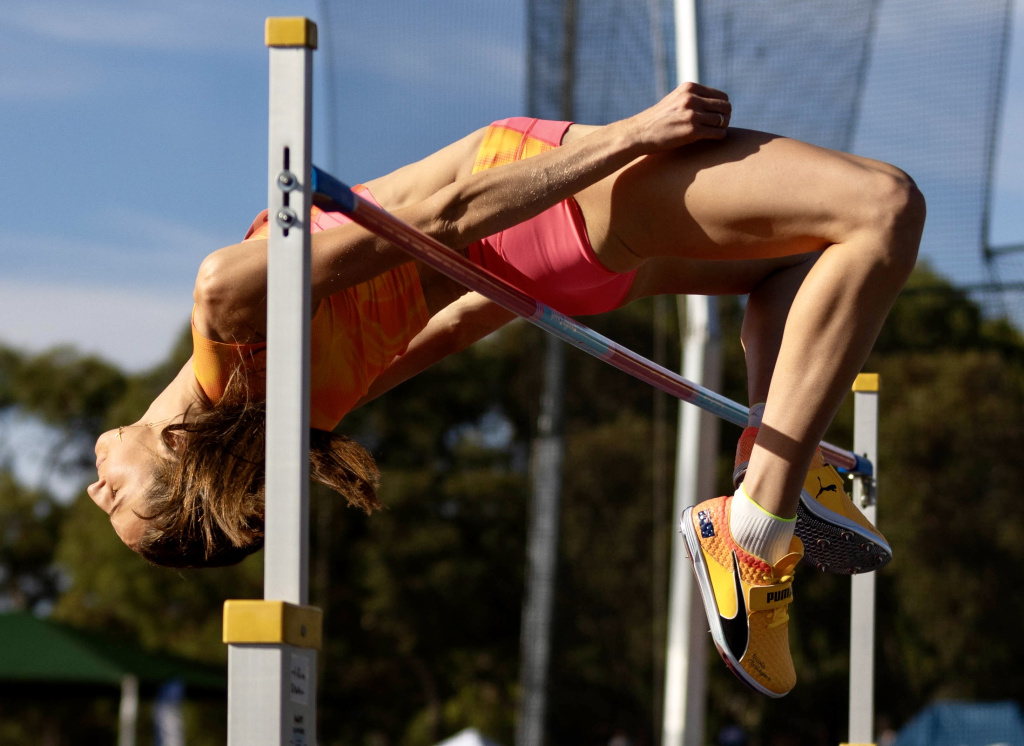
Olyslagers then did a “big bold thing” by raising the bar to 2.06m, just 3cm shy of the 1987 world record held by Bulgaria’s Olympic and dual world champion Stefka Kostadinova.
“I was thinking ‘How is it possible that it’s been 37 years since a woman jumped over 2.09,” Olsylagers said.
While not successful at 2.06m in Adelaide, Olyslagers said she’s going to keep pushing the bar up until she finds out just how high she can fly. “I don’t think I know what my best is, and that excites me.”
At the Glasgow World Indoors in early March she flew high enough to reach the gold medal with a clearance of 1.99m, to add to the bronze she won at the 2023 Budapest World Championships.
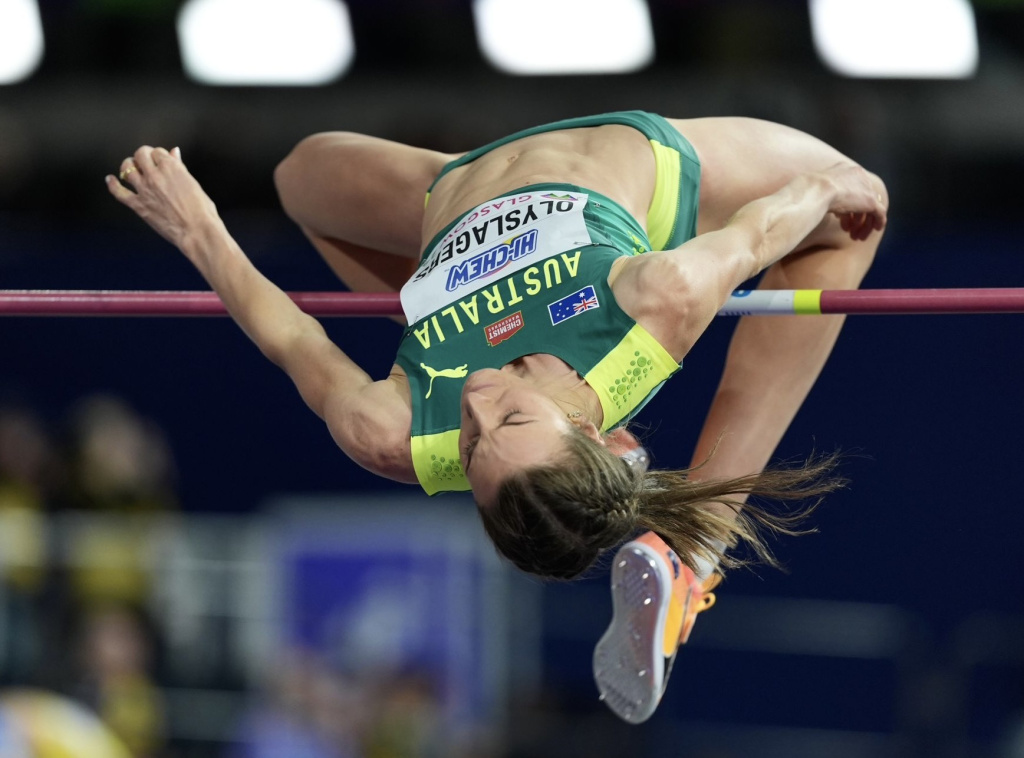
The NSW Institute of Sport’s (NSWIS) scholarship holder also beat the Ukrainian world champion and Tokyo Olympic bronze medallist Yaroslava Mahuchikh, who won silver in Glasgow with a 1.97m jump.
The priority is now the Paris Olympics and Olyslagers was among the first flush of 14 track and field athletes who were selected on April 13 for Paris at the conclusion of the Adelaide national championships.
These first 14 feature Australia’s most likely Olympic medallists with the list including fellow high jumper and 2022 Oregon World Champion Eleanor Patterson, Tokyo Olympic finalists Peter Bol (800m) and Matt Denny (discus), and 2023 Budapest World Championship 1500m finalist Jess Hull.
“For me Paris will be special,” Olyslagers said. “I’ll be giving it everything. I am aiming higher. My mind set is I want to do something I’ve never done before – a new personal best (over 2.03m). I don’t want to put a number on that because that’s limiting.
“I am so much fitter and stronger and more powerful and experienced now than I was at the Tokyo Olympics where I did 2.02m and was so close to jumping 2.04 metres. So what’s possible in Paris? It’s a big question mark. I am aiming high. I want to fly.”
Next time you walk through your front door – look up. The average door height is two metres. That’s how high Nicola Olyslagers jumps.
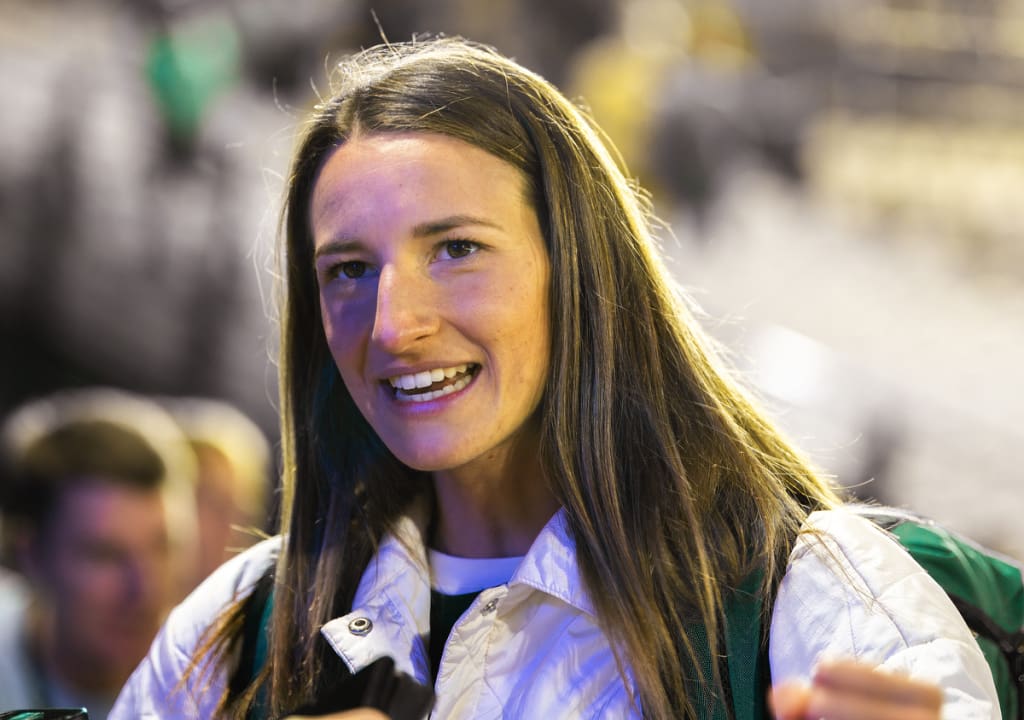
She targeted the two-metre mark back when she was just eight and a head taller than the other kids in Tascott, near Gosford on NSW’s Central Coast.
She was introduced to the high jump at Little Athletics and so she began her fixation with flying and the addictive feeling of liberation, freedom and peace that comes with sailing unaided through the air.
“When I look back, I guess most eight-year-olds are not thinking about one day jumping two metres in the high jump,” she said. “But back then I was tall for my age, and I had these long legs. I had tried swimming, surf lifesaving and tennis and I was useless. People would say, ‘you need to find something to use your height’. High jump was my calling.”
She started training under the guidance of longtime coach Matt Horsnell and together they set the sky as their limit.
“The philosophy that Matt and I have after training together for 16 years now is that every year, we are doing more training and building, so we are just getting better.
“Every year is an opportunity to step up and acknowledge that what I have learned has got me this far, but there is always more to do,” Olyslagers says.
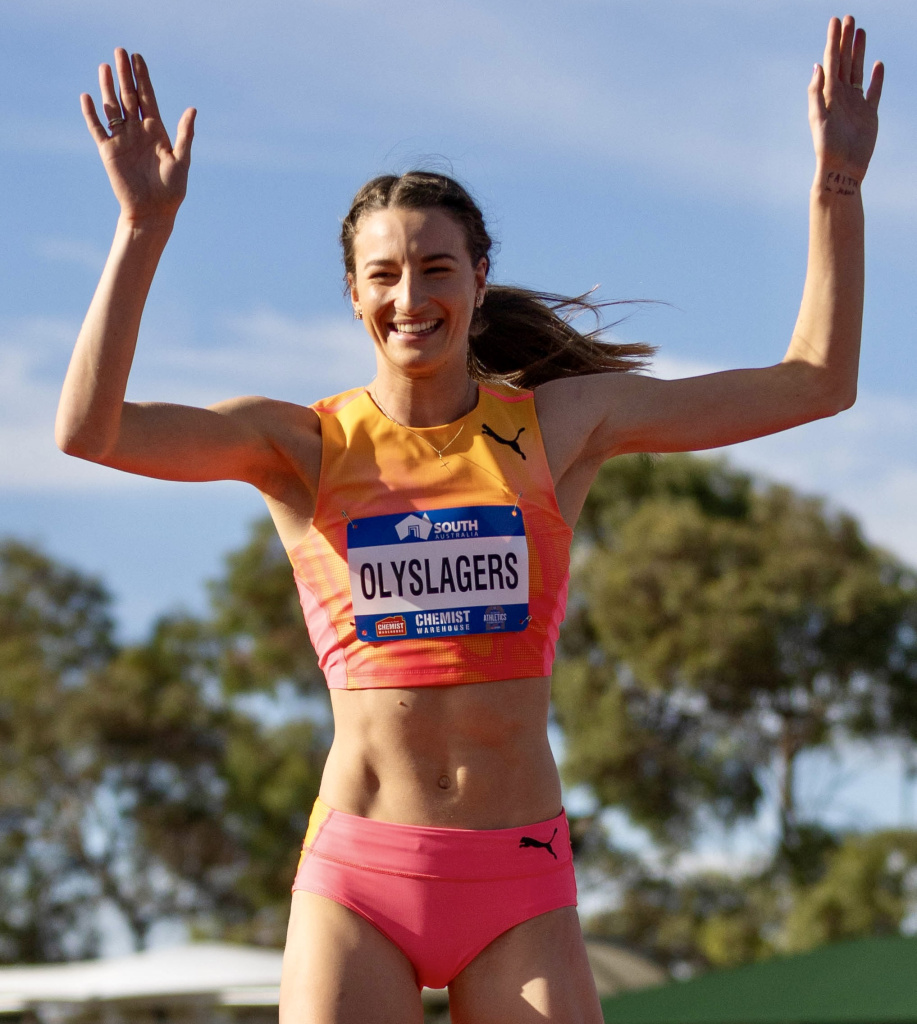
Now standing a statuesque 1.86m tall, Olyslagers (nee McDermott) believes her height comes from her Croatian genes and her maternal grandparents who lived on the island of Korčula, off the Dalmatian coast about halfway between Split and Dubrovnik.
She became the first Australian woman in history to clear the elusive two-metre barrier at the 2021 Australian Track and Field Championships.
The following year she graduated with a degree in Biochemistry from Sydney University and won the silver high jump medal at the Tokyo Olympics. She cleared two metres on her first attempt and finished second with a 2.02m Australian record behind Russian Olympic champion Mariya Lasitskene’s 2.04m winning jump.
To escape both Tokyo’s sweltering temperatures and the heat of Olympic competition Olyslagers took refuge in her notebook, which she wrote in after every jump.
The notebooks became a competition bag fixture and a famous prop which fans find fascinating. “What is she writing?”
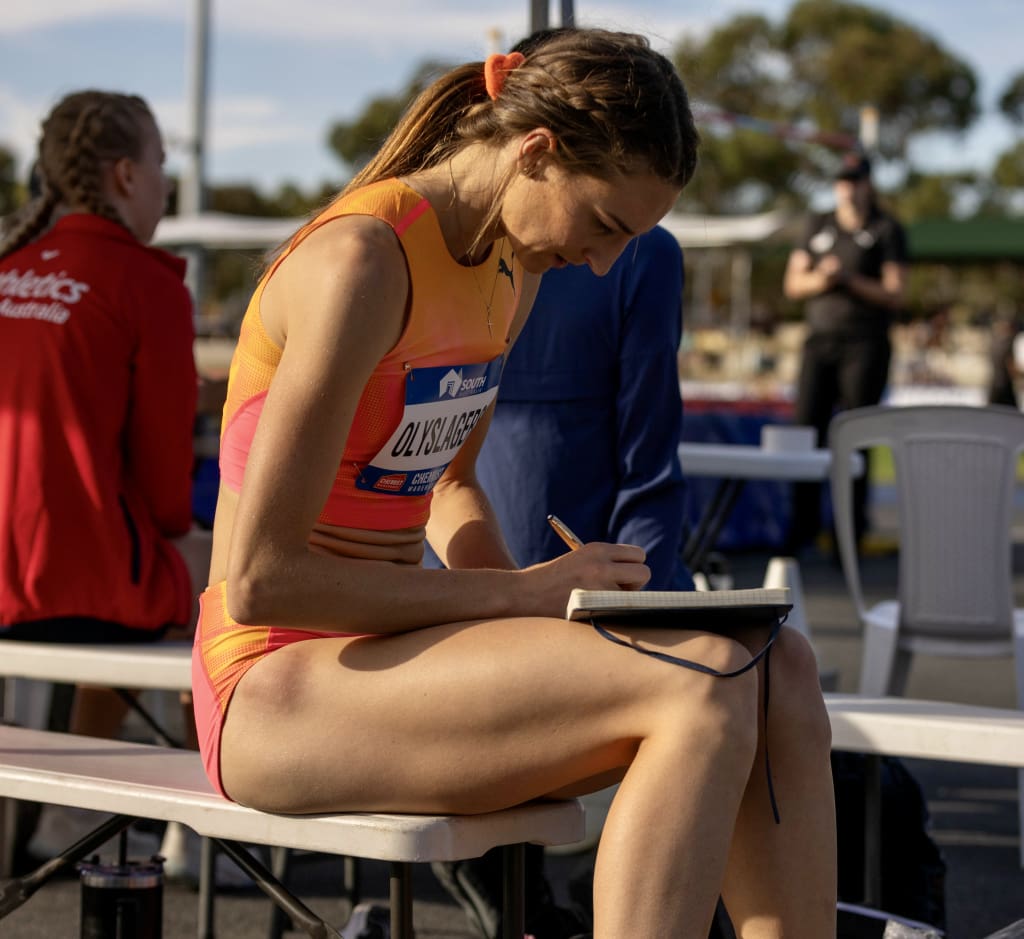
It’s no mystery. The notebooks provide a clever brain drain after each jump. She writes about what she did well, how she can improve next time as well as adding drawings, doodles, numbers, tips and self-help quotes.
Writing down all her thoughts after each jump clears her mind, gives her peace and allows her to stay calm and focused amid the whirlwind and stress of international competition.
“Once I write it down, it’s a bit like as soon as it is on a piece of paper you don’t have to put it into your mind and can just think about other things. So, I have been doing that, and it has been working really well.”
Olyslagers believes the next barrier for elite female high jumpers is 2.10m, keeping in mind the world record is 2.09m and was set almost 40 years ago.
“That would be crazy but it’s possible. Barriers are there to be broken, step by step I’m building to that. It would feel amazing.” Like flying.
Louise Evans is an award-winning journalist who has worked around Australia and the world as a reporter, foreign correspondent, editor and media executive for media platforms including The Sydney Morning Herald (eight years), The Australian (11 years) and Australian Associated Press (six years in London, Beijing and Sydney).
A women sports’ pioneer, Louise was the first female sports journalist employed by The Sydney Morning Herald and the first female sports editor at The Australian. Louise went on to work at six Olympic Games, six Commonwealth Games and numerous world sporting championships and grand slam tennis events.
Louise is the Founding Editor of AAP FactCheck, the Creator of #WISPAA – Women in Sport Photo Action Awards and national touring Exhibition and the author and producer of the Passage to Pusan book, documentary and exhibition.
In 2019 she was awarded the Order of Australia Medal (OAM) Queen’s Honour for services to the media and sport and named an Australian Financial Review Top 100 Woman of Influence for services to the arts, culture and sport.
In 2020 she won a NSW Volunteer of the Year Award plus the NSW Government Community Service Award for her women-in-sport advocacy work.




Discussion about this post